Polynesian Pride
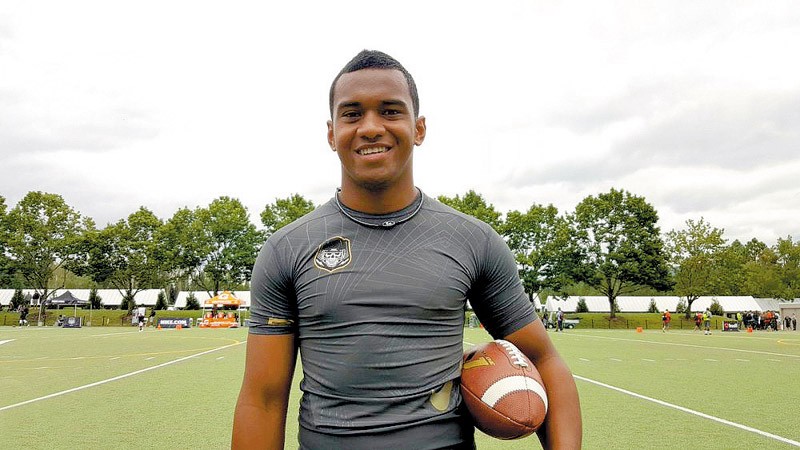
Among the players participating in the Polynesian Bowl is Tua Tagovailoa
The diaspora of a people can have two diametrically opposite effects simultaneously: It enriches the community at large by adding a diversity unknown to the outside world, while at the same time watering down thousands of years of cultural identity for those dispersed.
Polynesians have experienced this double-edged sword, as kids have moved away from the South Pacific following dreams of school, military service or simply a cheaper way of life. They brought with them their respectful, generous traits to towns across America and tried to ingrain those beliefs in the next generation. But no matter how much they talk about life in the Islands and what it means, its concepts can be hard to comprehend surrounded by the pine trees of rural Georgia or the frozen landscape of Michigan.
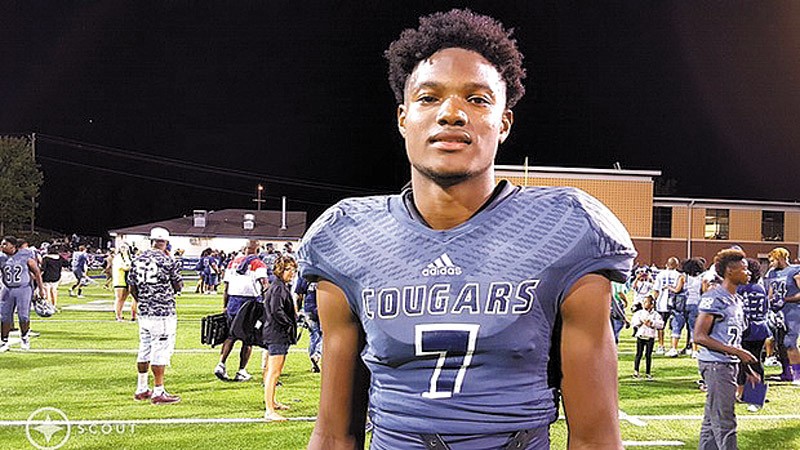
Nico Collins
This lesson came home to the founders of the Polynesian Football Hall of Fame (PFHOF) last year when they were inducting seven-time Pro Bowl center Kevin Mawae to the shrine.
“What struck us most was when Mawae was inducted in the PFHOF, and in his speech, he said he knew he was Polynesian because of his name and heritage, but he lost touch with the culture; he had never been to Hawaii and grew up in Louisiana as an Army brat and never really knew the Polynesian side of it,” says Ma’a Tanuvasa, former NFL defensive end, two-time Super Bowl champ and now one of the organizers of PFHOF. “We have all these kids all over the U.S. who know they are Polynesian but they didn’t really experience what the culture is and what it means to live in these Islands.”
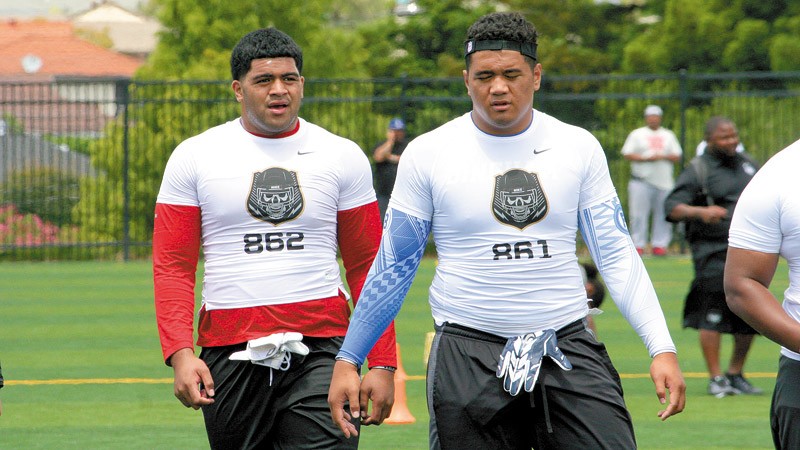
Marlon Tuipulotu
When the PFHOF first began five years ago, its vision was to pay tribute to those who had come before, much like another ethnically focused shrine that coach June Jones was involved with 40 years ago.
“I was involved in a group in Atlanta, in which we created the Black College Hall of Fame,” says Jones, who serves on the board of directors of PFHOF. “It was awesome to hear the greats like Deacon Jones getting up and saying this meant more to them then being in Canton, they were so proud. I didn’t realize the power of that until then, so I mentioned it to Jesse (Sapolu) on a trip to Samoa that they should create a Polynesian Football Hall of Fame.”
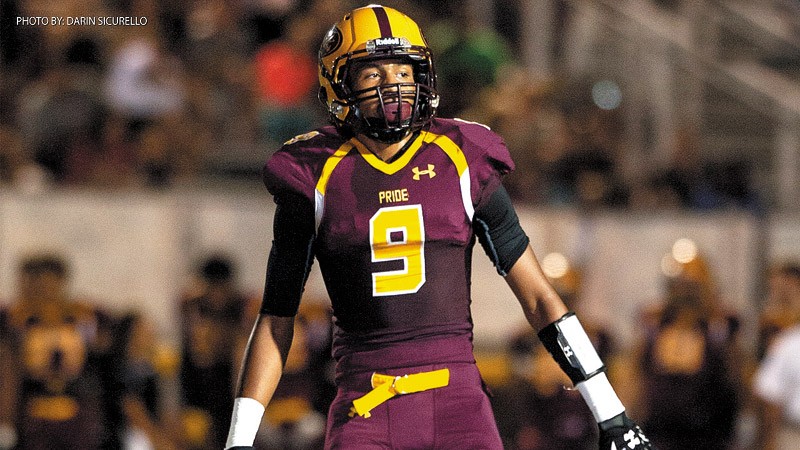
Isaiah PolaMao
It has grown every year, as it has found a permanent home in a wing at Polynesian Cultural Center. This year they decided to start looking forward as well as back and organized the inaugural Polynesian Bowl to help introduce kids from across the states, Samoa and New Zealand to island ways and highlight their football acumen.
“This is a way for us to remember the legends who opened the door for football in Polynesia and a way to bring in the top Polynesian talent from around the nation,” says Sapolu, PFHOF co-founder, four-time Super Bowl champion with the 49ers and two-time Pro Bowler. “Also, 30 percent of the kids are not Polynesian, and the idea is to get the top talent to come in and not just play the game, but share our culture. These kids could be the next Tom Brady or Aaron Rodgers, and the fact that they understand what we are about and have a connection is important.”
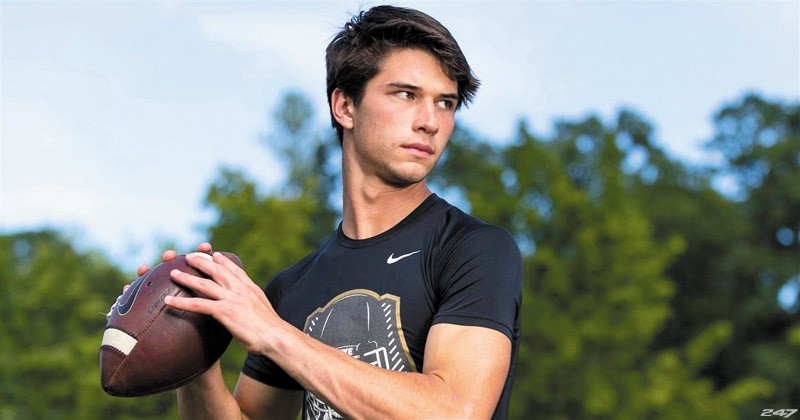
Dylan McCaffrey
The field of talent is made up of 84 of the top 300 ranked players, according to ESPN, many of whom soon will be starring at major universities around the country, from the SEC, Big 10 and Pac-12. There will be 18 states represented, but for coach Jones, it may help our local Polynesian kids the most.
“In Hawaii, we always have 30 to 35 Division I players, but every year only 14 or 15 of them get D I scholarships,” says Jones, citing examples Ashley Leile, Chad Owens and Ikaika Alama-Francis as players not offered scholarships here who went on to have big-time professional careers after walking on at UH. “I felt like, if we had the commitment of 30 players from Hawaii in this game, then we can get the other 15 players opportunities to be seen playing against and evaluated against the best players in the country, increasing opportunities for kids from Hawaii to get scholarships they wouldn’t have gotten otherwise.”
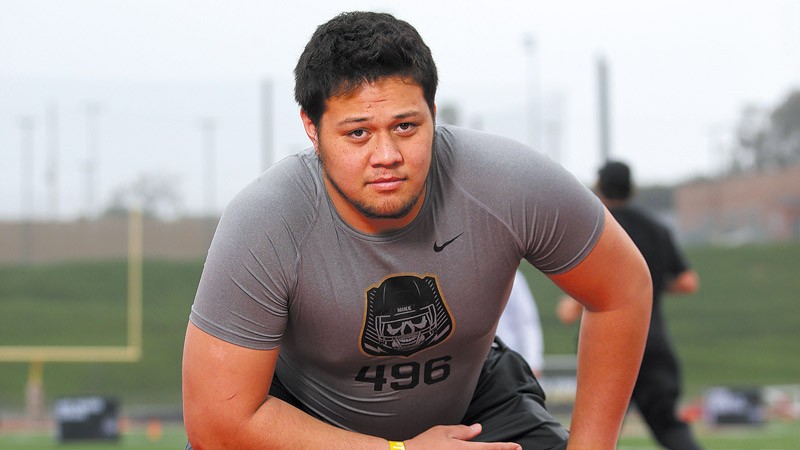
Chuck Filiaga
They also saw the game as filling a void left when the Pro Bowl departed this year, leaving local residents hungry for more football.
“We are hoping to get a good fan base that will want to come out and see some kids who will be playing at the next level soon in big -time college programs,” says Tanuvasa.
Attracting talent to the game was easy, according to Jones, for the same reasons it used to entice NFL players.
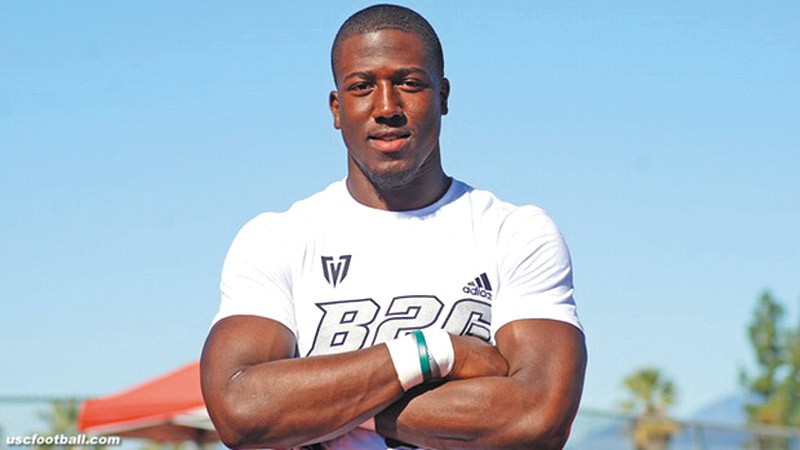
Also participating in the Polynesian Bowl is Greg Johnson
“I thought we could get any high school player to come because Hawaii is the draw,” says Jones. “But I think this game will fill a real void that the Pro Bowl left, and I think people here will accept this as their game as it grows.”
Even if they are not big names yet, Sapolu is excited because fans will get to see some effort exerted, unlike recent showings in the NFL’s exhibition game.
“It’s hard because the passion (to play in the Pro Bowl) is not there, no matter how hard we try to promote it,” says Sapolu, who remembers back in his day they would bust their butts trying to win because that $10,000 bonus check was a big deal to them and their families. “But high school players haven’t made any money, so they want to make a name for themselves, and it is a great chance for them to finish their career in a special place.”

AJ Epenesa
The other thing Sapolu recalls about his playing days is how important finding fellow Polynesian players was, even if they were your opponent on that particular day.
“When I played, I was lucky if I’d see a Polynesian player every four to five weeks,” says Sapolu, who graduated from Farrington High School and University of Hawaii. “You looked forward to playing those teams — you are competing against them, but you get to see another Polynesian brother on the other team and talk to them after the game. But now you have a Polynesian on every team; some teams have three or four. Polynesia has become the Dominican Republic of the NFL — we have a small population but we are putting a lot of players in the league.”
For years the Dominican Republic has stocked Major League baseball with players. One out of every 10 MLB players come from this Caribbean island of just 10 million people. Today, even though Polynesians make up only half of 1 percent of the U.S. population, more than 200 Polynesians have played professional football, a number that makes them 28 times more likely than any other ethnic group to find a spot on a team.
Tanuvasa experienced the same yearning for his Polynesian competitors. “First thing I would do when I played was to get the game-day media guide and try to find the Polynesian player on the other team,” says Tanuvasa, who now coaches football at Mililani High School. “Even guys on the practice squad who are trying to make the team, guys who don’t dress up for the game, and you would look for them before or after the game and make those connections.”
Non-Polynesians echo his sentiments, as well. Coach Jones sought out islanders in the NFL because of his time at UH as a player.
“In the mid-’70s, I remember seeking out Polynesians on the other sideline to go introduce myself to them just with any connection to Hawaii. I made a lot of lifelong friends that way,” says Jones, who played quarterback at UH in 1973 and ’74. “Even in the ’80s, when we played the Niners, I would walk across to go talk to Jesse. The success of players like Marcus, Jesse and Ma’a really has had an impact on the number of players from here who get to go to college to play football, and that was not available many years ago. It used to only be BYU and Hawaii. Now you see them at all colleges and even in the SEC.”
Fostering these connections is what the game is all about, bringing together players with common ancestral roots but uncommon day-to-day lives, and making friendships that will foster a kinship with fellow Polynesians. There will be four days of practice leading up to the game, with the teams being coached by Jones and another familiar Hawaii face, coach Dick Tomey.
“We tried to bring in the best Polynesian players from all over the country in, and it is about showcasing the Polynesian athletes, but it is also about exposing those athletes to the culture because the majority of them don’t live in Polynesia,” says Tomey, who coached at UH from 1977-86. “We will be spending a whole day on the North Shore practicing at Kahuku, going to Polynesian Cultural Center and have a good all-around exposure to Polynesian culture.”
The game will be played this Saturday at 6 p.m. at Aloha Stadium. Tickets range from $9 to $15 and are available through Ticketmaster, or visit polynesianbowl.com.






